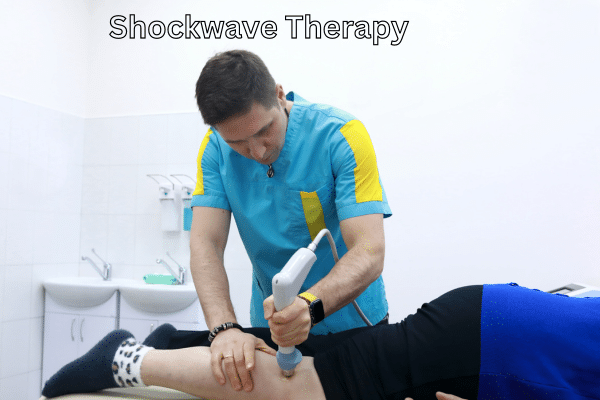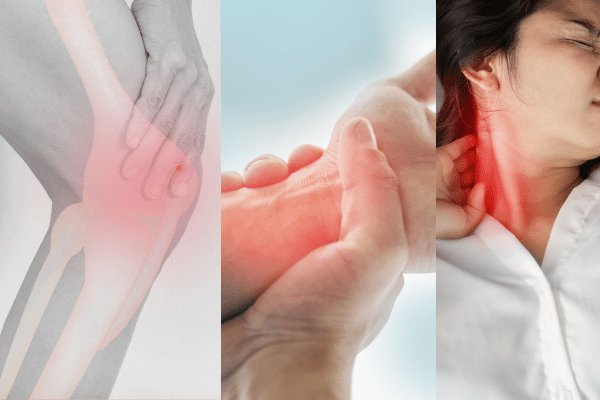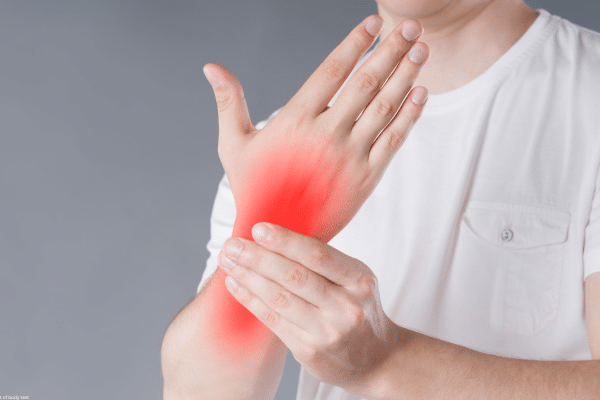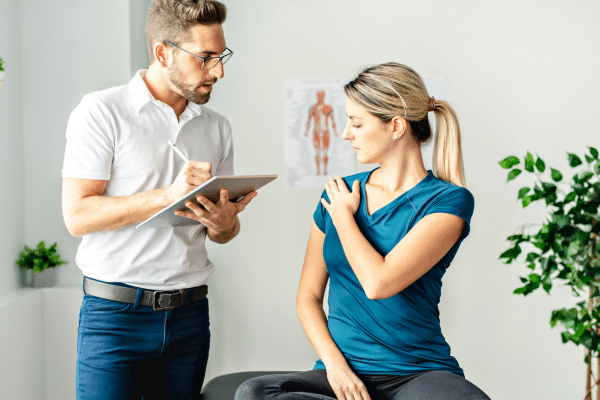What can a physiotherapist do to help after a car accident?
A physiotherapist can provide several helpful interventions after a car accident, such as:
Pain management: They can use different techniques such as manual therapy, ultrasound, and heat or ice application to relieve pain.
Exercise therapy: They can design specific exercises to help you regain your strength, flexibility, and mobility, which can be lost after a car accident.
Posture correction: A physiotherapist can help you improve your posture and body mechanics to reduce the risk of developing chronic pain or injuries.
Education: They can educate you on safe movement techniques and activities to avoid further injuries or worsening of your condition.
Assistive devices: If needed, they can recommend and provide you with assistive devices such as crutches or braces to help you move around safely and comfortably.
Overall, a physiotherapist can play a crucial role in helping you recover after a car accident and improve your quality of life.
Is it advisable to see a physiotherapist after being involved in a car accident?
Yes, it is advisable to see a physiotherapist after being involved in a car accident. Physiotherapy can help you manage pain, regain mobility and function, improve posture, and prevent future injuries.
A physiotherapist can assess your condition, design an individualized treatment plan, and guide you through the recovery process. It’s important to seek professional help as soon as possible after a car accident to prevent complications and optimize your chances of full recovery.
The common type of car injuries which requires physiotherapy
Whiplash: This is a neck injury caused by a sudden jerking motion, often seen in rear-end collisions. Physiotherapy can help reduce pain, improve neck mobility, and restore function.
Back injuries: Car accidents can cause a range of back injuries, such as sprains, strains, and herniated discs. Physiotherapy can help reduce pain and inflammation, improve range of motion, and strengthen the muscles to support the spine.
Soft tissue injuries: These are injuries to muscles, ligaments, and tendons that can cause pain and limited mobility. Physiotherapy can help reduce pain and inflammation, restore mobility, and prevent scar tissue formation.
Fractures: Broken bones are a common injury in car accidents. Physiotherapy can help reduce pain and swelling, improve range of motion, and restore strength and function after a fracture.
Head injuries: Concussions and other head injuries can cause a range of symptoms, including headaches, dizziness, and cognitive difficulties. Physiotherapy can help improve balance, coordination, and cognitive function, and reduce symptoms.
Overall, physiotherapy can be beneficial in treating a range of car injuries, helping patients recover faster and improve their quality of life.
Why it is important to start physical therapy after having an Accident?
There are several reasons why one should start physical therapy after a car accident
Pain management: Car accidents can cause a lot of pain and discomfort. Physical therapy can help manage pain through various techniques, such as manual therapy, heat or ice application, and exercises.
Regain mobility and function: Car accidents can cause injuries that limit mobility and function. Physical therapy can help restore range of motion, flexibility, and strength, and prevent long-term complications.
Prevent scar tissue formation: Scar tissue can form after an injury, leading to restricted movement and chronic pain. Physical therapy can help prevent scar tissue formation and promote healthy tissue healing.
Prevent future injuries: Physiotherapy can help identify weaknesses, imbalances, and compensations that may lead to future injuries. By correcting these issues, one can reduce the risk of developing new injuries or worsening existing ones.
Improve overall quality of life: Physical therapy can help patients regain their independence, improve their ability to perform daily activities, and reduce pain and discomfort, leading to an overall better quality of life.
In summary, physical therapy after a car accident can help manage pain, restore function, prevent complications, and improve overall well-being. It is important to seek professional help as soon as possible to optimize the chances of a full recovery.
The 4 important steps to take after having a car accident?
Check for injuries: Check yourself and others involved in the accident for any injuries. Call emergency services if needed.
Move to a safe location: If possible, move the vehicles involved in the accident to a safe location away from traffic.
Document the scene: Take photos of the scene, damage to the vehicles, and any injuries sustained.
- Seek medical attention: Even if you feel fine, it is important to get checked by a medical professional to rule out any hidden injuries.
After receiving initial treatment following a car accident, it is important to continue with appropriate care and follow-up appointments. This may include visiting a physiotherapist .
It is also important to rest and allow the body to heal, following any instructions from the medical team regarding activity limitations. Communicating any changes or concerns with the healthcare team is crucial to ensure that any issues are addressed promptly.
By taking these steps, individuals can optimize their chances of full recovery and minimize the risk of long-term complications following a car accident.













